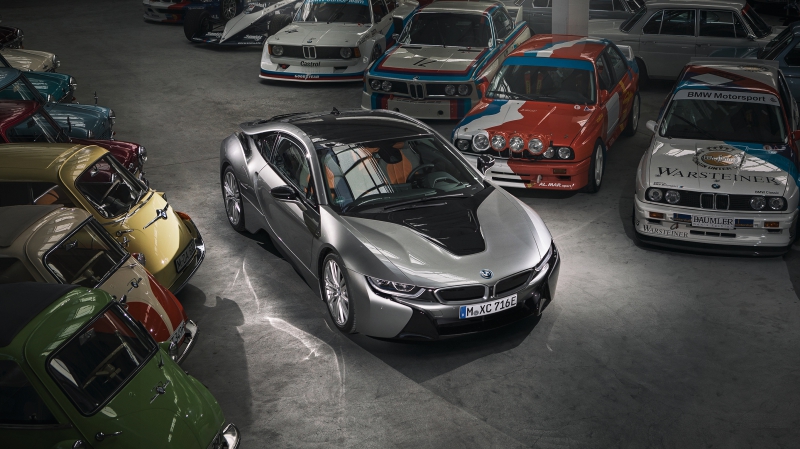It doesn’t bode well for a top drawer performance car like the BMW i8 to have a lengthy press release written about its imminent demise. In a world swamped by online tribute articles to any little morsel of historical significance, it must be galling for BMW’s communications department to remind the public of the i8’s passing more than its actual demise.
BMW’s carbon-fibre plug-in hybrid sports car certainly was the most ambitious thing to have come out of Bavaria since the company pinned its hopes of being lifted out of the mire of mediocrity with the Neue Klass. When it first appeared as the diesel-powered EfficientDynamics Concept in 2009, many thought that it was just another far-out concept to wax on about the potential of future fuel-efficient fun. That all changed just two years later with the reveal of the close-to-production i8 Concept.

By the time the i8 Concept came out, the commodities boom that had stoked everyone’s PTSD of the 70’s Oil Crisis had waned. However, BMW’s ambitions for a carbon-fibre 2+2 sports car with a mid-mounted engine smaller than the one used in the MINI clearly hadn’t. The company had already poured millions into expanding its facilities at Leipzig to accommodate the production of its two all-carbon fibre cars, the i8 and i3, so the only way was forward.
The i8 would debut in 2013 and would go on to be a rather divisive creation. Purists were dismissive of its tiny engine and hybrid nature, ever questioning the validity of electric motors in a performance car. Pundits were far more appreciative of its dynamic prowess and the charisma of its three-cylinder banger and electric drive but questioned the persuasiveness of the entire package over an icon like the 911. It was good by all metrics, but not nearly “911-good”, and even with its spaceship looks and supercar doors, that wasn’t good enough.

In the six years since its debut, BMW had managed to move just 20,000 examples of both the i8 coupe and roadster. In the market of carbon-fibre bodied mid-engine sports cars, that sounds like a lot. But in the arena of the 911, it is a mere pittance. Porsche shifted nearly 12 times that number between 2011 and 2019.
Was the i8 too far ahead of its time? Or like the hybrid Honda NSX was it a case of a mainstream manufacturer overreaching its brand equity to swing with the big leagues? Perhaps the absence of a higher-performance M version or different variants to sate specific demands of its clientele and keep public interest alive squandered the i8’s chances of making a lasting impact as hybrid and electric performance cars became ever quicker and more mainstream. We may never know for sure.

Interestingly BMW’s communications team does go into great detail as to how the i8 served as a pioneer for the company’s electric drivetrain development, carbon-fibre construction, and even 3D printing of parts. BMW initially created the BMW i sub-brand as an experimental division to trailblaze new ideas and looking at the i8’s role as the recipient of a long list of pioneering methods for the company, it looks like it is mission accomplished for the venerable sports car.
In that light, the right way for BMW to honour the i8 would be to carry on the technology and methods it helped develop. Though considering that the next model to wear the BMW i brand would be a conventional electric four-door coupe built to challenge Tesla, it isn’t looking too good for the largely forgotten sports car’s legacy.

